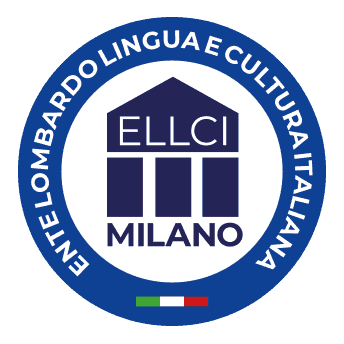
17 Apr
Our tips: 5 easy and good books to read in Italian for beginners
How difficult is it to find good books to read in Italian for beginners?
Identifying one’s skills and the level of difficulty of a text can require great efforts if we have to choose blindly in the middle of the shelves of a library.
If we are already at an intermediate level, B1-B2, we have a wide choice in all literary genres.
Below a B1 level, we have to recognize that the options are more limited, as the number of words to look for in the dictionary increases, and an approximate choice could discourage us from the start.
For A1-A2 levels, graded readers, both specially written and adapted from other larger and more complex books, are a good compromise to keep the exercise active and enjoy the pleasure of reading.
In the suggestions that follow, we have alternated some graded reader titles with other authentic texts.
Easy books to read in Italian
Our advice for those who have recently approached the Italian language, accessible texts for A1-A2 levels.
- Storie di due minuti
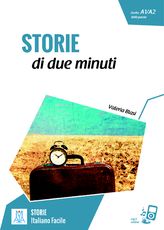 A series of graded readings to read in two minutes and set in everyday life contexts. They present a facilitated but authentic language, in which the dialogues reproduce the speech in various communicative situations. it is possible to access the audio version of the text online, useful for training oral comprehension, intonation and pronunciation. The texts are integrated by comprehension tests, exercises, didactic activities. Have a look here.
A series of graded readings to read in two minutes and set in everyday life contexts. They present a facilitated but authentic language, in which the dialogues reproduce the speech in various communicative situations. it is possible to access the audio version of the text online, useful for training oral comprehension, intonation and pronunciation. The texts are integrated by comprehension tests, exercises, didactic activities. Have a look here. - Fiabe italiane di Italo Calvino.
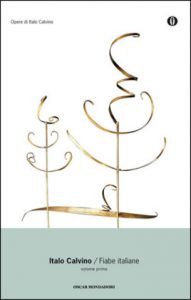 Not only Pinocchio, the Italian popular tradition is full of fairy tales and different stories in each region of the Boot. Italo Calvino, one of the most important Italian authors, collected and transcribed in Italian from the various dialects, 200 fairy tales of the popular tradition. A practical and imaginative way to take a tour of Italy through popular imagination.
Not only Pinocchio, the Italian popular tradition is full of fairy tales and different stories in each region of the Boot. Italo Calvino, one of the most important Italian authors, collected and transcribed in Italian from the various dialects, 200 fairy tales of the popular tradition. A practical and imaginative way to take a tour of Italy through popular imagination. - Omicidio nel castello.
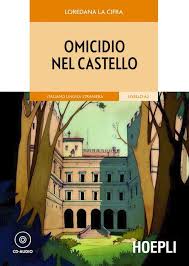 For lovers of Lake Como and thrillers. Narrated in a simple style but faithful to the spoken language, the story is accompanied by comprehension exercises that follow each chapter. The pages of civilization focus on elements and aspects of the Italian reality. Finally, “L’angolo del CELI” presentscertification preparation exercises. An audio-CD with full text reading completes the volume.
For lovers of Lake Como and thrillers. Narrated in a simple style but faithful to the spoken language, the story is accompanied by comprehension exercises that follow each chapter. The pages of civilization focus on elements and aspects of the Italian reality. Finally, “L’angolo del CELI” presentscertification preparation exercises. An audio-CD with full text reading completes the volume. - Topolino.
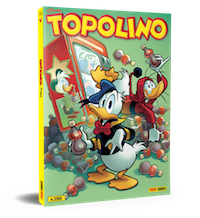
One of the most fun readings to learn the Italian language, it also has significant advantages. The combination of text and image facilitates the intuition of the meaning of unknown words without the need to use vocabulary.Finally, comics are a large collection of informal and common expressions. They are rich in colloquial sentences, idioms and sayings, and their language is very close to that actually spoken by native speakers. From 30 March you can read two stories directly on their website. - Storia della Gabbianella e del gatto che le insegno a volare.
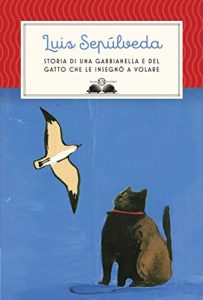 A universal story, capable of captivating all ages. Friendship, courage, integration and much more in the celebrated work of Sepulveda. In 1998 it became an Italian animated film. Luis Sepúlveda himself participated in the Italian dubbing of the film in the role of the poet.
A universal story, capable of captivating all ages. Friendship, courage, integration and much more in the celebrated work of Sepulveda. In 1998 it became an Italian animated film. Luis Sepúlveda himself participated in the Italian dubbing of the film in the role of the poet.
How to read books in Italian?
Learning a foreign language revolves around four basic language skills: listening, reading, writing and speaking. The first two are associated with reception: when we listen and when we read we must understand a message. The other two concern the production of an understandable and effective message.
We often associate reading with a passive action. However, the exercise of reading remains a fundamental tool for consolidating and learning a language.
To be effective, the act of reading must follow three golden rules:
- set achievable goals. Don’t go to the New York marathon without training. If we have just started studying the Italian language, begin to practice reading with a simple book. La Divina Commedia can wait.
- follow your interests. choose a book that addresses issues dear to you. The most effective example is to start from the recipes, or from the lyrics of the Italian songs you like, but traditional Italian fairy tales or a magazine article are also fine.
- read carefully. it does not mean memorizing every word contained in the text before proceeding further. Try to read a page quickly and understand as much information as possible (according to the orientation or skimming reading method). During the second reading of the same page, underline, mark or circle the words you don’t know (keep a dictionary at hand or use a translation app for Italian), and identify the grammatical rules in the sentences.
Whatever your approach to reading, reading is essential in the learning process: it increases vocabulary and helps memorize rules and concepts.
Reading is also one of the pleasures of life, in the words of Umberto Eco:
“At the age of 70, those who don’t read will have led only one life: their own! Those who read will have lived 5000 lives: they were there when Cain killed Abel, when Renzo married Lucia and when Leopardi admired the infinite… because literature is backwards immortality”.
